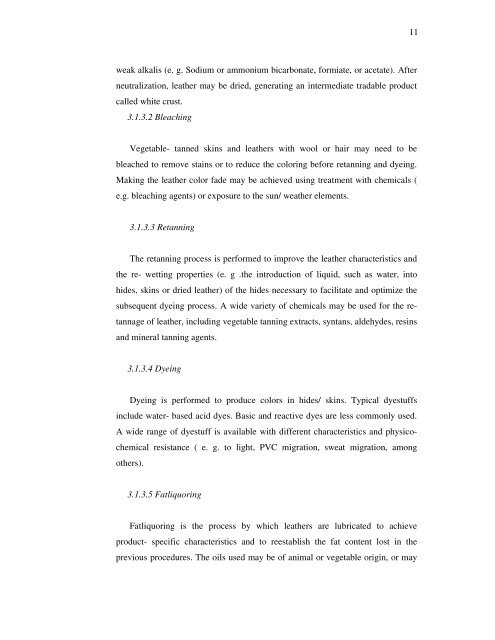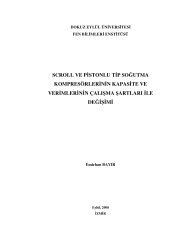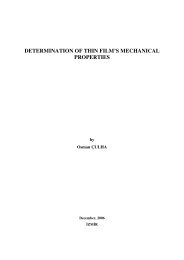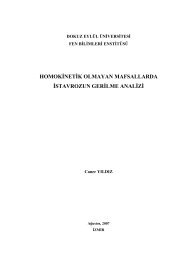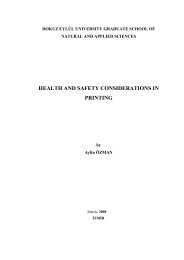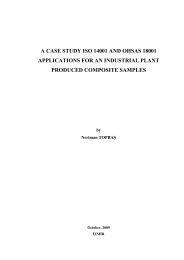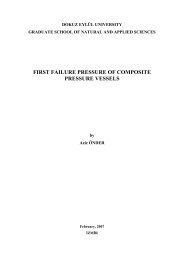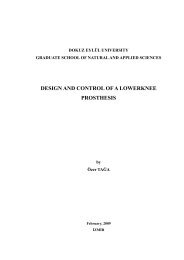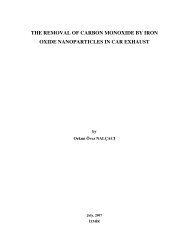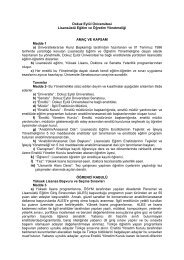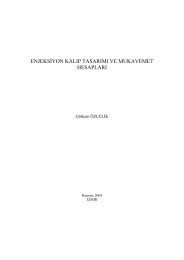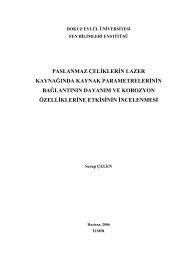WASTE MANAGEMENT IN LEATHER INDUSTRY
WASTE MANAGEMENT IN LEATHER INDUSTRY
WASTE MANAGEMENT IN LEATHER INDUSTRY
You also want an ePaper? Increase the reach of your titles
YUMPU automatically turns print PDFs into web optimized ePapers that Google loves.
11 24weak alkalis (e. g. Sodium or ammonium bicarbonate, formiate, or acetate). Afterneutralization, leather may be dried, generating an intermediate tradable productcalled white crust.3.1.3.2 BleachingVegetable- tanned skins and leathers with wool or hair may need to bebleached to remove stains or to reduce the coloring before retanning and dyeing.Making the leather color fade may be achieved using treatment with chemicals (e.g. bleaching agents) or exposure to the sun/ weather elements.3.1.3.3 RetanningThe retanning process is performed to improve the leather characteristics andthe re- wetting properties (e. g .the introduction of liquid, such as water, intohides, skins or dried leather) of the hides necessary to facilitate and optimize thesubsequent dyeing process. A wide variety of chemicals may be used for the retannageof leather, including vegetable tanning extracts, syntans, aldehydes, resinsand mineral tanning agents.3.1.3.4 DyeingDyeing is performed to produce colors in hides/ skins. Typical dyestuffsinclude water- based acid dyes. Basic and reactive dyes are less commonly used.A wide range of dyestuff is available with different characteristics and physicochemicalresistance ( e. g. to light, PVC migration, sweat migration, amongothers).3.1.3.5 FatliquoringFatliquoring is the process by which leathers are lubricated to achieveproduct- specific characteristics and to reestablish the fat content lost in theprevious procedures. The oils used may be of animal or vegetable origin, or may


